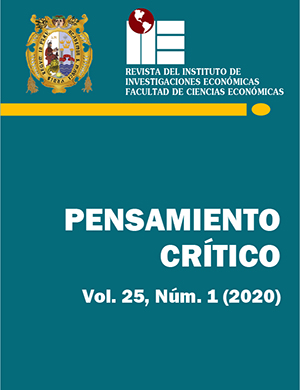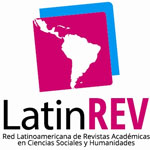Informal employment in Peru: A brief characterization 2007-2018
DOI:
https://doi.org/10.15381/pc.v25i1.18477Keywords:
Informal employment, informal employment in the informal sector, informal employment in the formal sectorAbstract
The informal employment rate is high (72.4%), represents the main problem of the labor market in Peru and it has remained persistent in recent years. There is a positive correlation between poverty and informality, which can be understood by the lower purchasing power of informal workers. The informal employment rate is higher in rural than in urban areas, which could be explained by the presence of agricultura small. By sex, women are more vulnerable to accepting jobs in precarious conditions. Similarly, young workers and older adults are more likely to fall into informality. The higher the educational level, the lower the informal employment rates. The largest number of informal workers is in the group of independent workers, which means that there is wide margin and action to generate public policies in this group of workers. The branch of extractive activity has the highest informal employment rate. In the case of labor income, there is a large gap between informal and formal workers, with a 3 to 1 ratio in favor of the latter.
JEL: F66.
Downloads
Published
Issue
Section
License
Copyright (c) 2020 David Tenorio Manayay

This work is licensed under a Creative Commons Attribution-NonCommercial-ShareAlike 4.0 International License.
THE AUTHORS RETAIN THEIR RIGHTS:
a. The authors retain their trademark and patent rights, and also on any process or procedure described in the article.
b. The authors retain the right to share, copy, distribute, execute and publicly communicate the article published in Pensamiento Crítico (for example, place it in an institutional repository or publish it in a book), with recognition of its initial publication in Pensamiento Crítico.
c. The authors retain the right to make a subsequent publication of their work, to use the article or any part of it (for example: a compilation of their works, notes for conferences, thesis, or for a book), provided they indicate the source of publication (authors of the work, journal, volume, number and date).















